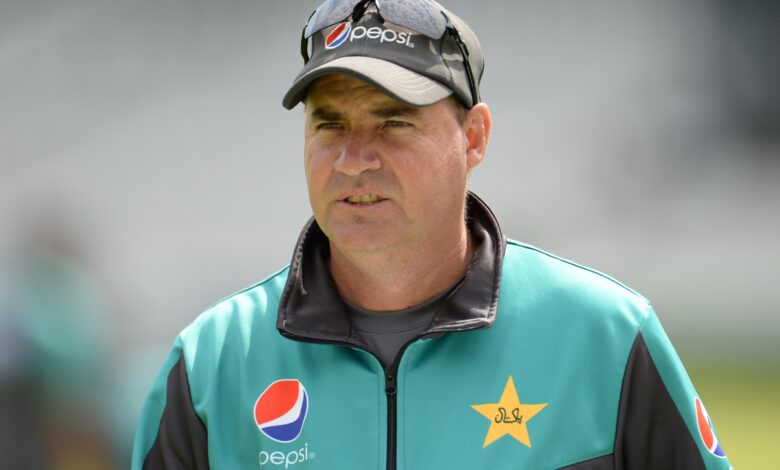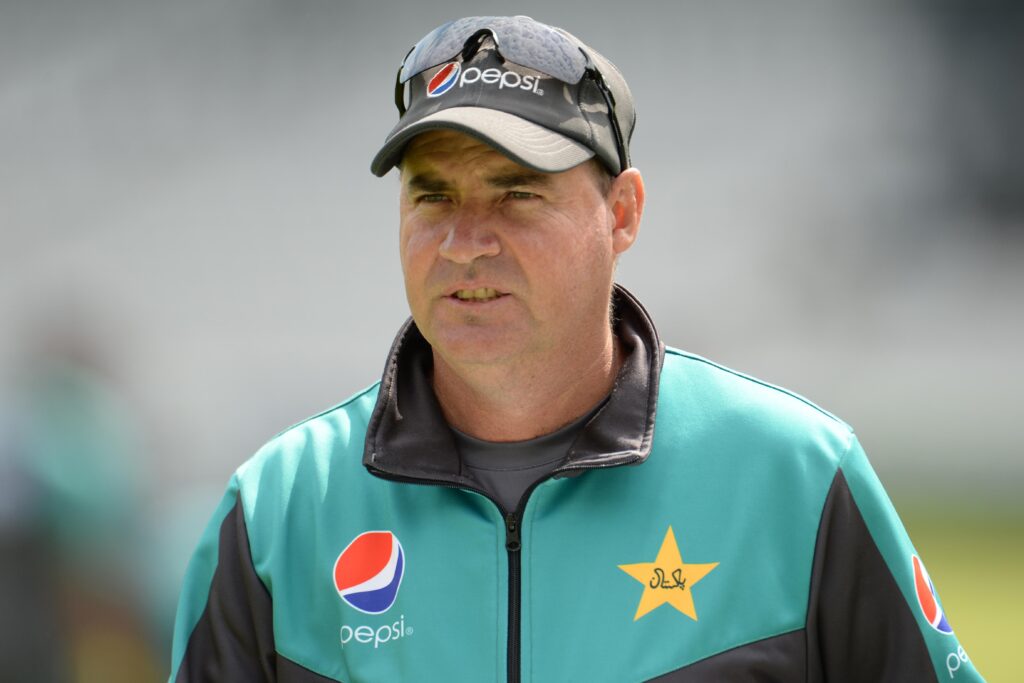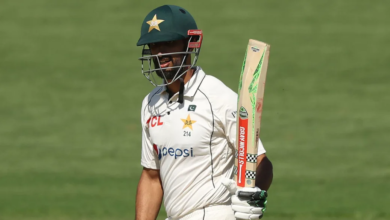Mickey Arthur Contemplates Separation from PCB

In the latest developments within the cricketing realm, Mickey Arthur, the seasoned coach, is reportedly contemplating parting ways with the Pakistan Cricket Board (PCB). This potential separation has stirred discussions and speculation within the cricketing community, prompting reflection on Arthur’s tenure and the potential implications for Pakistan’s cricketing landscape.
The Coaching Journey of Mickey Arthur
Mickey Arthur, a highly respected figure in the cricketing world, has been at the helm of Pakistan’s coaching staff since his appointment in 2016. Over the years, he has navigated the team through various challenges, contributing to notable successes and improvements in performance.
Under Arthur’s guidance, Pakistan clinched the ICC Champions Trophy in 2017, marking a significant achievement for the team. His coaching philosophy, focus on player development, and strategic insights have left a lasting impact on Pakistan’s cricketing approach.
Signs of a Potential Departure
Recent reports indicate that Mickey Arthur is contemplating a departure from his role within the PCB. While the exact reasons behind this potential decision remain undisclosed, it has sparked speculation and discussions about the future direction of Pakistan’s cricketing strategy.
Coaching roles in international cricket often come with a myriad of pressures, expectations, and challenges. The decision to part ways, if finalized, could be influenced by a combination of personal considerations, team dynamics, and the evolving landscape of international cricket.
Evaluating Arthur’s Impact on Pakistan Cricket
As the cricketing community awaits official confirmation or statements regarding Mickey Arthur’s potential departure, it is an opportune moment to reflect on his impact during his tenure with the PCB.
1. Champions Trophy Triumph:
One of the highlights of Arthur’s coaching stint was Pakistan’s stunning victory in the ICC Champions Trophy in 2017. The team, led by Sarfaraz Ahmed, showcased resilience and skill to claim the prestigious title, marking a memorable chapter in Pakistan’s cricketing history.
2. Player Development:
Arthur’s emphasis on player development has been a focal point of his coaching philosophy. His role in nurturing young talents and providing opportunities for emerging players has contributed to the infusion of fresh talent into the national squad.
3. Ups and Downs in Performance:
Like any coaching tenure, there have been periods of success and challenges. Pakistan’s performance in various formats has witnessed ups and downs, and the team has faced criticism during phases of inconsistency.
4. Strategic Approaches:
Arthur’s strategic approaches to the game, both in terms of team composition and match tactics, have been noteworthy. His methods, at times, have been experimental, reflecting a desire to adapt to the evolving dynamics of international cricket.
5. Building Team Culture:
Building a cohesive team culture is a crucial aspect of coaching, and Arthur’s efforts in fostering a sense of unity and camaraderie within the squad have been evident. The team’s unity was particularly evident during significant victories and in challenging times.
Potential Implications for Pakistan Cricket
If Mickey Arthur indeed decides to part ways with the PCB, the decision could have several implications for Pakistan’s cricketing landscape:
1. Appointment of a New Coach:
The departure of a head coach often paves the way for the appointment of a new figure to lead the team. The selection of a coach is a critical decision, as it shapes the direction of the team and influences the strategies employed on the field.
2. Transition Period:
A coaching change may usher in a transition period for the national squad. Players might need time to adapt to a new coaching style, and adjustments may be required in team dynamics.
3. Continuity vs. Change:
The PCB will need to weigh the balance between continuity and the need for change. While stability is valuable, strategic adjustments may be deemed necessary to address any identified shortcomings.
4. Impact on Player Dynamics:
The relationship between players and the coaching staff is pivotal. A change in coaching personnel can have varying effects on player dynamics, influencing individual performances and team cohesion.
5. Fan and Media Reaction:
Coaching changes often elicit diverse reactions from fans and the media. The expectations and scrutiny surrounding the team may intensify, especially if the decision to part ways with Arthur is met with mixed opinions.

The Coaching Carousel in International Cricket
The coaching carousel is a familiar aspect of international cricket, with coaching tenures often subject to evaluation and periodic changes. Coaches play a central role in shaping the ethos and performance of a team, and decisions regarding coaching staff are made with the overarching goal of enhancing the team’s competitiveness.
Cricket boards around the world navigate the delicate balance of maintaining stability while embracing strategic changes when needed. Coaching decisions are influenced by a combination of factors, including team performance, player dynamics, and long-term strategic objectives.
https://www.myminifactory.com/stories/oracle-1z0-1032-23-exam-question-certs4sale-659a8d7d31caa
https://www.myminifactory.com/stories/oracle-1z0-1003-23-exam-dumps-pdf-question-659a8d3276666
https://www.myminifactory.com/stories/oracle-1z0-340-23-dumps-questions-answers-659a8cd440728
The Way Forward for Pakistan Cricket
As the cricketing world awaits further developments on Mickey Arthur’s potential departure, it provides an opportunity for introspection within the PCB. The decision-making process should involve a comprehensive assessment of the team’s current standing, the aspirations of the players, and the strategic vision for the future.
1. Identifying Key Priorities:
The PCB must identify key priorities for the national team, considering both short-term goals and long-term development. This involves a thorough evaluation of the team’s strengths, weaknesses, and areas for improvement.
2. Leadership and Communication:
Effective leadership and communication will be paramount during this period. Transparent communication with players, coaching staff, and stakeholders will help manage expectations and foster a sense of direction.
3. Player Development Pathways:
The development of a robust player development pathway is essential for ensuring a continuous influx of talent into the national squad. This involves investing in grassroots cricket, youth development programs, and talent identification initiatives.
4. Strategic Coaching Appointment:
The appointment of a new head coach should align with the strategic vision of the PCB. The selected candidate should bring a fresh perspective, align with the aspirations of the team, and possess the ability to inspire and develop players.
5. Continued Support for Emerging Talents:
The PCB should continue to invest in and support emerging talents. This involves providing opportunities for young players to showcase their skills in domestic and international competitions, ensuring a sustainable pipeline of talent for the national team.
In Conclusion
The potential departure of Mickey Arthur from the PCB marks a significant moment in Pakistan cricket. It opens the door to a new chapter, presenting both challenges and opportunities for the national team. As decisions unfold, the focus should be on charting a course that aligns with the broader goals of Pakistan cricket, fostering a culture of continuous improvement and sustained success.
Cricket, as a sport, is dynamic and ever-evolving, and adaptability is a key attribute for success. The cricketing community will keenly observe the developments in the coming days, as Pakistan navigates through the intricacies of coaching transitions, seeking a path that propels the team toward greater heights on the international stage.





